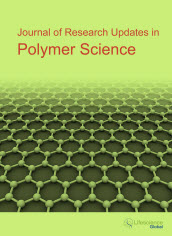jrups
Abstract : Innovative Rice Seed Coating (Oryza Sativa) with Polymer Nanofibres and Microparticles Using the Electrospinning Method
|
|
Abstract: Seed treatments are chemical or biological substances that are applied to seeds to control infection by disease-causing organisms, insects, or other pests. Seed treatment reduces production costs of seedlings, reduces the consumption of seeds, facilitates mechanization of sowing and improves the seedling establishment. The generation of nanofibres and microcapsules by the electrospinning technique is a novel approach for active ingredient controlled release. The study evaluates an innovative rice seed coating (Oryza sativa) with polymer nanofibres and microparticles using this method. Materials and Methods:Polymer nanofibres and microcapsules were applied by the electrospinning technique to irrigated rice seeds. The treatments consisted of: 1) Control, 2) Negative control - Polymer based microcapsule without fungicide. 3) Polymer based microcapsule with fungicide. Microbiological assays and germination tests were performed following the guidelines of the Seed Analysis Rules of the Ministry of Agriculture. Results:The applied polymer as a coating did not affect the physiological quality of the seeds, as attested by the result of the germination tests, and they proved to be effective in the control of fungi disease in crop seeds. Conclusion: The germination and phytosanitary characteristics were improved in the analyzed study. Keywords: Analytical models, dielectric mixtures, effective permittivity, dispersive models, polymers.Download Full Article |
Abstract : Nanofibers as a Vehicle for the Synthetic Attactant TRIMEDLURE to be Used for Ceratitis capitata Wied: (Diptera, Tethritidae) Capture
|
|
Abstract: The Mediterranean fruit fly (medfly), Ceratitis capitata (Wied.) is considered a serious pest of citrus fruits in the southeast of Brazil because of the direct economic impact they have on fruit production and quarantine restrictions for fruit exports. Monitoring and detection of the medfly, using food bait and synthetic attractants, is a key step towards signalling the need for management and control. The aim of this study has been to verify the attractiveness of innovative nanofiber formulations with Trimedlure (TML) for the male of C. capitata in laboratory and field cage tests. Material and Methods:The nanofibers were produced by solution or emulsion electrospinning, containing TML and polymers, such as polycaprolactone, PEG-polycaprolactone, ethyl cellulose and polyvinyl acetate-PVP.
Results: At the laboratory the electrophysiological responses were accessed by the eletroanntenogram technique and in the field by the cage test. The bioactivity of C. capitata antennae was highest when stimulated with all TML nanofiber treatments rather than their controls. There were no differences among the TML nanofiber treatments. In the field cages the same number of medflies were found on the adhesive traps baited with one of each of the TML nanofibers. Keywords: Medfly, electrospinning, nanofibers, pheromone dispenser. Download Full Article |
Abstract : Upon Synthesis of Poly(N-isopropylacrylamide-co-2-dimethyl-aminoethyl methacrylate-co-itaconic acid) Copolymers as Matrix Ensuring Intramolecular Strategies for Further Coupling Applications
|
|
Abstract: The study presents a set of copolymers synthesis based on N-isopropylacrylamide, 2-dimethylaminoethyl methacrylate and itaconic acid comonomers found in different gravimetric ratio, acquired through polymerization in water in the presence of ammonium persulfate as radical initiator. The purpose was to prepare polymeric structure with dual sensitivity to temperature and pH respectively, and able as well to ensure intramolecular strategies for coupling applications of inorganic or bioactive compounds. The polymers composition was confirmed by FTIR and 1H-NMR spectra. The thermal stability of the polymeric compounds was evaluated, and SEM investigations of the polymer morphology are also presented. The polymers dispersions were characterized from the viewpoint of their hydrodynamic radius, zeta potential and conductivity. Keywords: N-isopropylacrylamide, 2-dimethylaminoethyl methacrylate, itaconic acid, radical polymerization, dispersion.Download Full Article |
Abstract : Application of Disordered Organic Semiconductor Theory to Low Temperature Curing of Epoxy Resins (2)
|
|
Abstract: The steep autocatalytic feature in a highly accurate DSC study of the heat rate from curing an epoxy resin with piperidine at 27.5 Deg C could not be explained using chemical kinetic power laws usually applied to curing epoxy resin products at higher temperatures. The theory of disordered conjugated organic semiconductors developed in the last decade has been applied to the observed heat rate data. Four heat rate sources have been identified to completely account for the experimental data. Two of the four sources generating 80% of the heat are consistent with mobility change of ion pairs indicating that the low temperature cure follows an organic semiconductor mechanism. It was shown that autocatalysis did not begin until about one fiftieth of the epoxy rings were opened (ignition). After ignition the heat rates of two propagation mechanisms grow exponentially. One charge transport mechanism generates a small heat rate but grows immediately after ignition due to an increase in ion pairs by the dopant (piperidine). The second mechanism appears later but becomes dominant, peaking at 50% completion, where the heat rate is about 50 times higher than the start of the first mechanism. The rate increase is attributed to localized energy sites that lower the LUMO level closer to the HOMO level of the monomer increasing the mobility (heat rate). Keywords: Epoxy resins, kinetics (polym), calorimetry, diffusion, organic semiconductors.Download Full Article |























